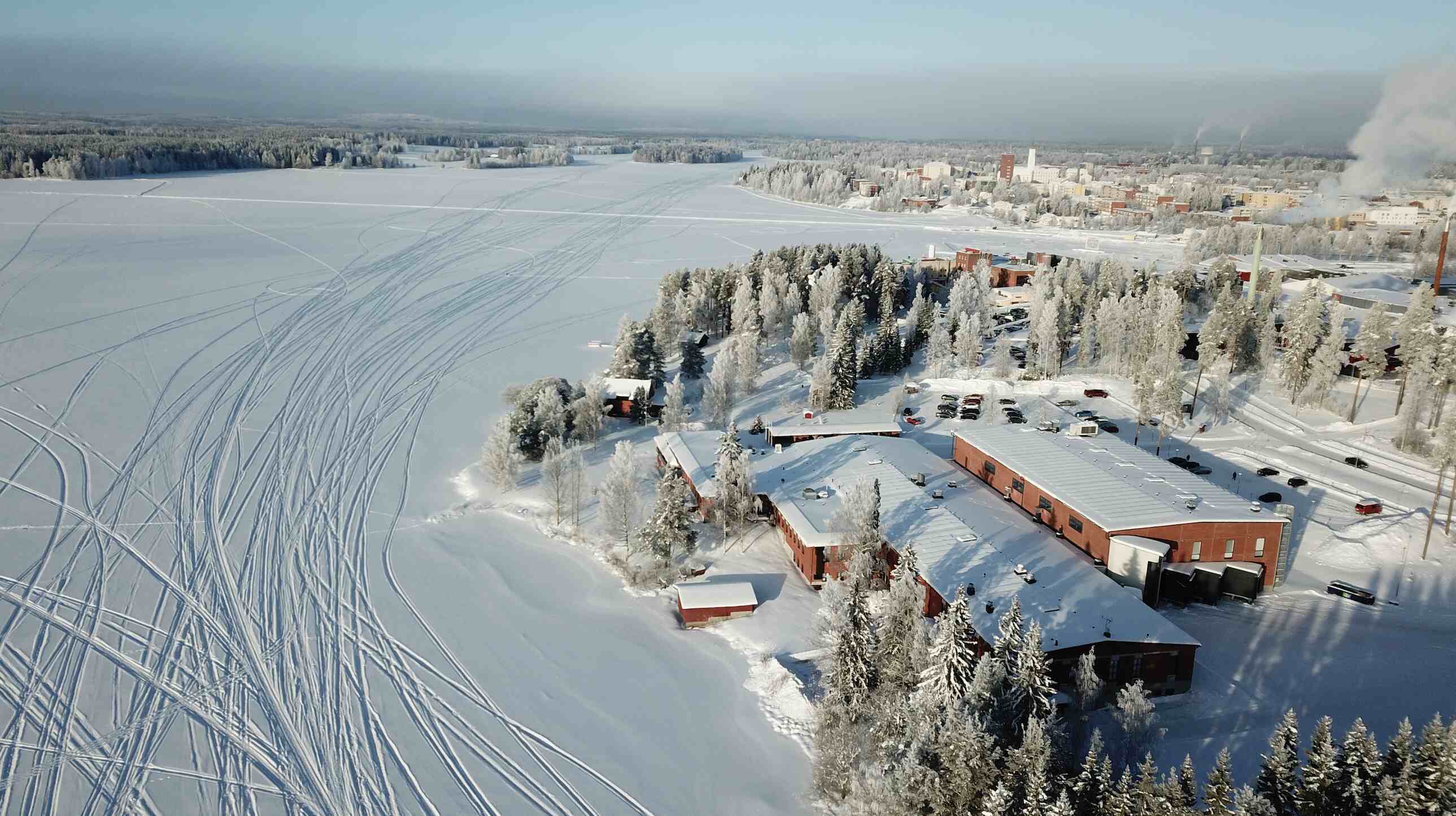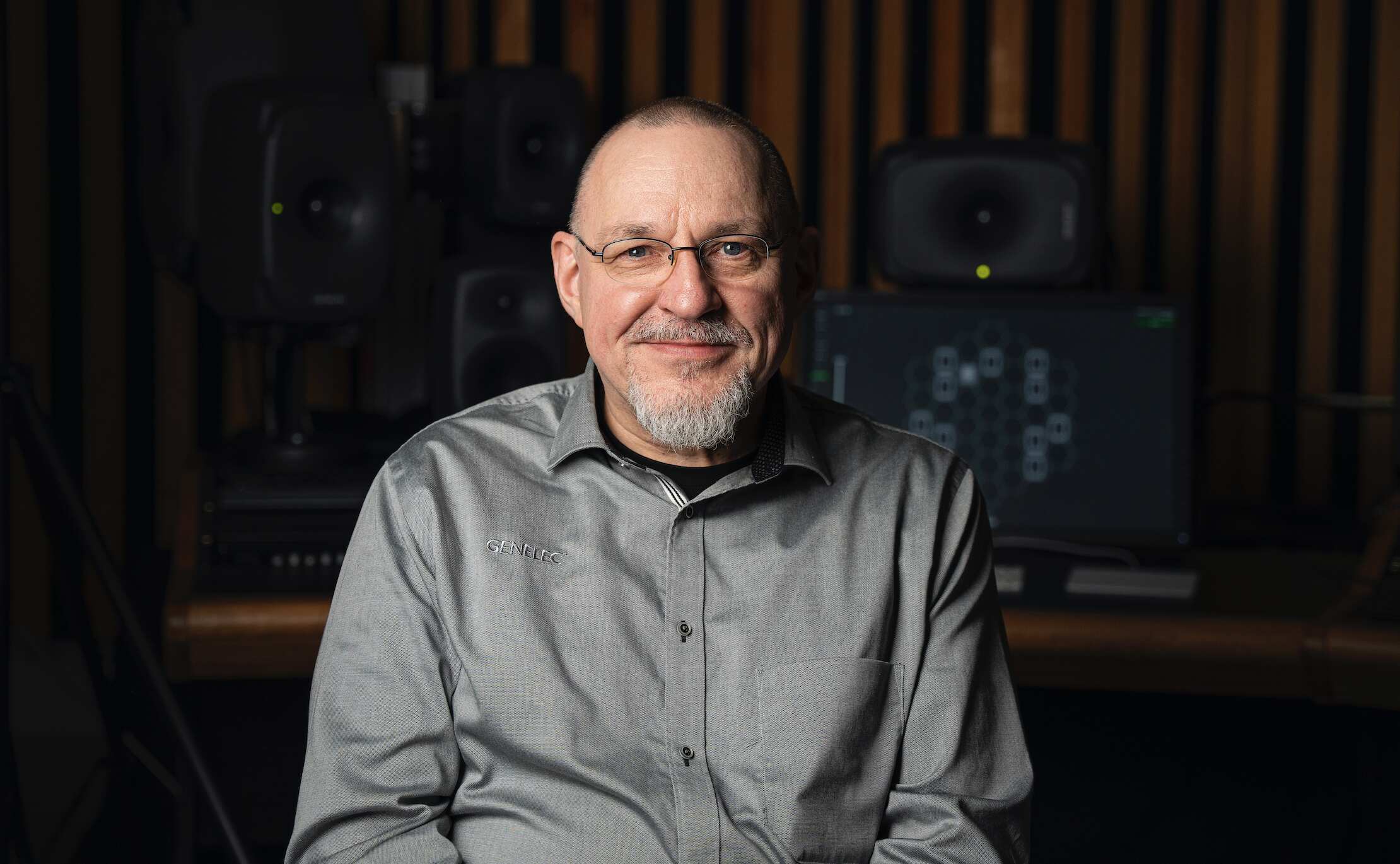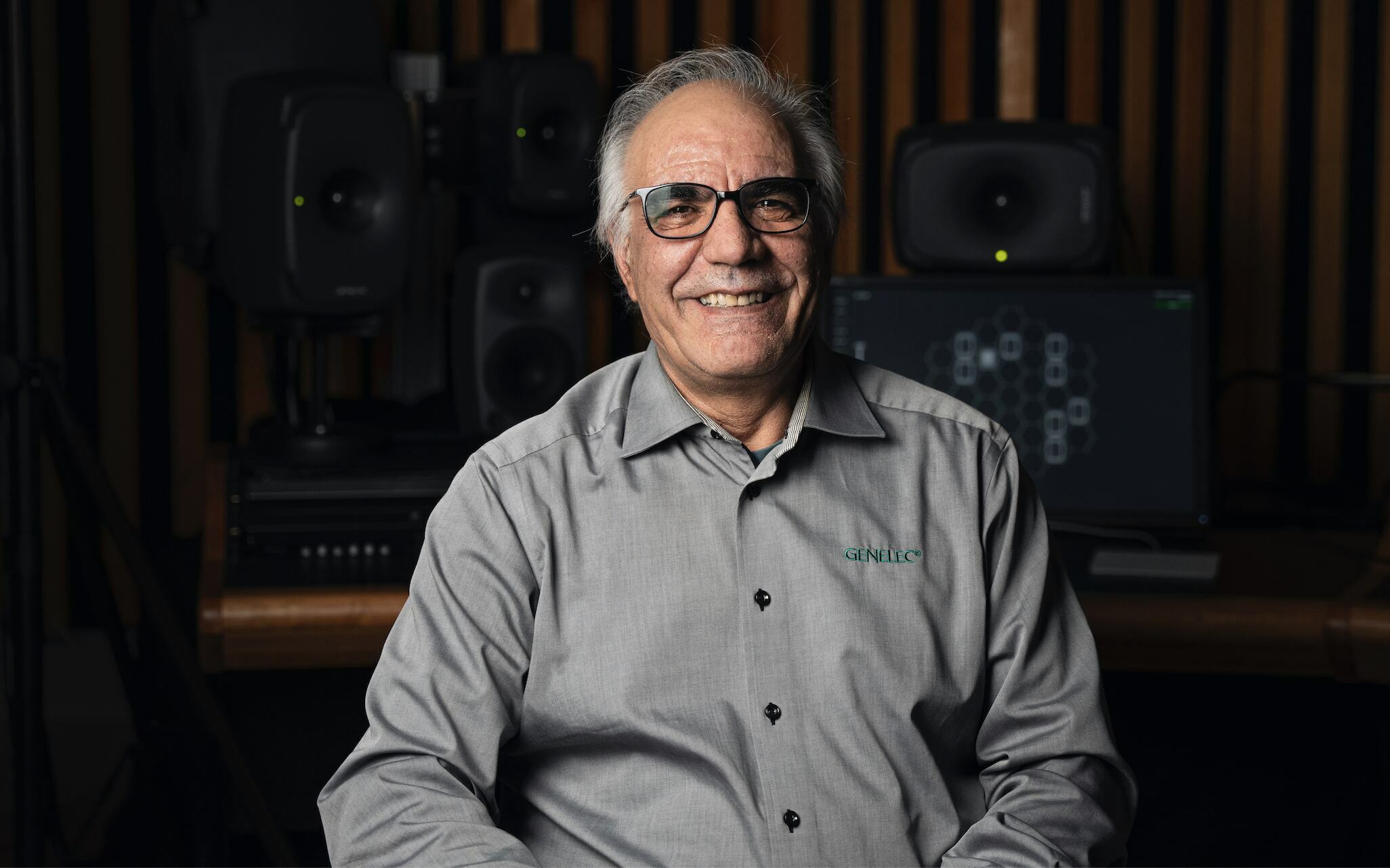Based in the small Finnish town of Iisalmi, a short flight aboard a tiny, propellered plane away from Helsinki, Genelec’s HQ and manufacturing plant is located in a place of picturesque beauty. Which is not a thought that usually abounds when visiting such sites. More typically, facilities of this kind are set to the functional, concrete grey backdrop of an out-of-town industrial estate. In this case, we are met with a modest – externally at least – building nestled amongst tall, lush spruce, birch, aspen, and pine trees. To the rear, the land gives way to a vast blue lake that extends almost as far as the eye can see. And at the time of Headliner's arrival, the town has been subject to a couple of days’ snowfall. As such, the ice white of the sky, frozen lake and surrounding environs bleed into one – still, silent, and creating a glacial, almost otherworldly vista.
As we venture inside to take a tour of the company's R&D and production facilities, it feels almost as though elements of the world outside have leaked indoors. The interior, all bright white, clean surfaces, is surprisingly serene. Engineers can be found diligently going about their work, while the quiet is broken only by the faint murmur of machinery and conversation between co-workers. It feels more akin to a science lab than a factory.
At the conclusion of our tour, we are joined in an audio demo room by Siamäk Naghian and Aki Mäkivirta, Genelec’s managing director and R&D director, respectively. From the moment we sit down with them for a chat about the state of the market and all things Genelec, it is immediately apparent that they are a great foil for one another. Mäkivirta speaks eloquently and in detail about the practicalities and challenges of leading R&D at a market leading brand, while Naghian, usually deep in thought, is more sparing with his words, often speaking philosophically about the evolution of the business and the importance of holding onto the family values and commitment to quality that have been a constant at Genelec ever since it was co-founded by the late Ilpo Martikainen and Topi Partanen in 1978.
“I’ve always been interested in how companies like this are created,” says Naghian. “Ilpo and Topi Partanen had a deep connection with audio and technology long before they had the company. They had great entrepreneurship and excellent knowledge and passion for their subject and a great emotional connection.”
Of course, the company has grown significantly over the past 45 years, becoming an undisputed giant of the studio sector. In turn, those at the helm are constantly towing a line between consistent growth and remaining true to those long-established brand values. Central to that has been the decision to keep production and R&D in Isalmi and resist temptation to relocate to more cost-effective locations.

“If you look at the last 20 years, the trend has been to move production elsewhere,” Naghian continues. “This has not been a question for us. Many years ago, we did have discussions about what the best thing to do is, and we concluded that that is not our way. It’s so important that we look at R&D and production as an integrated process, and because of that it was never a question for us to do R&D here and production somewhere else. Our roots are a huge part of our identity.”
“For some companies there has been a race to the bottom to keep the price as low as possible, but there is a sacrifice when you do this,” Mäkivirta elaborates. “You sacrifice the possibility of creating new things - you cannot afford to do the research you need to do to create great new things. You are giving up a lot of what you could potentially be doing.”
This notion of combining production and R&D as an integrated process, the pair inform us, is a crucial strategic decision, and one that has been central to the firm’s success.
“One of the most important things is that we can be sure of the quality of the products leaving the factory,” Mäkivirta explains. “If there is a large distance [between R&D and production], and we don’t have daily contact, anything can happen. And if you have a big surprise, then fixing that surprise later can be very difficult. But if we develop the methods we can talk daily and understand how things are working.”
“Another very important reason is that it’s the only way to ensure the long lifetime of the products,” says Naghian. “If you look at products like the S30 from ’78 they are still in use today. I haven’t seen a single one that is not working or couldn’t still be serviced. If we didn’t have R&D and production integrated, it would have been impossible to maintain this kind of heritage.”
While aspects of the past punctuate and inform the course of the conversation, we turn our focus to the industry of today, particularly the matter of how the monitoring market has developed in light of the pandemic.
“What Covid was making more visible was this long-term trend of people moving away from fixed facilities,” says Mäkivirta. “It speeded this development up, but that was already happening before Covid. People have become much more independent. You can have high quality gear at home, or an improvised location and you don’t need to go to a dedicated studio or venue to do that work. Then there is the distributed method of working, where people don’t have to be in the same place at the same time to do recording. Whole projects can be done in this manner.”
Another major talking point is the immersive audio boom. Though far from a new topic, the increasing uptake of the format has moved quicker over the past year or so than at any other time. For Genelec, far from being a passing fad, it is, in Naghian’s words, one of the most important trends in audio.
“Immersive listening is the natural way we hear,” he says. “When we talk about immersive audio, we have to keep in mind there are two parts – production and consumption. We have been focusing on the production side for many years. We have been looking to bring that experience closer to people by building experience centres around the world, as immersive audio is something people need to experience – it’s very difficult to explain what the value is. And what we offer is a total system solution, the network of the system, the calibration. It makes things really easy for people who want to have a multi-channel immersive system.”

“People want to have an experience that is similar to the daily experience you have of hearing audio all around you,” Mäkivirta comments. “So if we can bring the experience of that to people when they are listening to recorded audio then that is the way to go. We are rejoicing this. It means that people are in need more than ever of accurate sound reproduction systems so that they can engineer the experience they want to create.”
Essential to Genelec and the immersive movement as a whole is the continued education around what exactly the term immersive audio means. Often described as 3D, spatial, or object-based audio, it is vital that the concept is fully understood before it can be adopted as the new norm.
“We are going through a collective learning process like we did for stereophony, where people come to understand different ways of presenting audio,” Mäkivirta explains. “In terms of production styles, think of cinema - there is an established way of using immersive audio. They have a frontal main sound image, then sound moving in different directions around you. In productions like music and drama, people are continuously inventing new ways of expressing the space and creating atmospheres. Immersive playback is creating entirely new dimensions. There is no doubt it will become mainstream.”
Beyond the subject of immersive audio, Mäkivirta notes that the company is always monitoring the market closely, keeping its ear to the ground for new developments in what its customers demand.
“If you think of the R&D effort and how we want to focus it, we want to be able to provide solutions for what the customers are asking for,” he says. “And that is very much associated with the method of working that people are using and will be using in the future. We want to understand how working methods will evolve so we can provide solutions for them. We always have this challenging question of, ‘how is this going to change’? It could be to do with connectivity or system integration, and we must be following these developments continuously.”
This, says Naghian, is an integral part of the company’s DNA, prompting him to reflect on the values that have shaped Genelec over the past 45 years. And, he elaborates, these values extend not just to the pro audio market, but right across the firm’s staff and the town that spawned it.
“There are certain values that have been so strong,” he states. “A lot of the staff here have been here a long, long time, so there is a great working environment and community which is a huge part of why we have been successful. And we will base the company’s next 45 years on these foundations. There is a very strong emotional connection between the company and the community. We feel very responsible for the impact we have in the local society and that is a mutual responsibility - if society is doing well then we are doing well, and vice versa.

“And there are things like sustainability,” he continues. “From day one sustainability has been a vital part of the company. We don’t look at it as being in conflict with the business we do - it actually supports the business that we do. Practically it has meant that we design and manufacture products that live for a long time – still we have S30s in use. Like quality, sustainability should be part of the people’s mindset. That is what I see at Genelec. So starting from R&D, people are looking at the components they choose with this in mind. They aren’t looking at what is the cheapest component but what is the best component.”
At the time of our stay in Isalmi, the tail end of 2022, Genelec is planning a series of yet to be confirmed commemorative events to mark its 45th anniversary in 2023. And while the pair refuse to be drawn on what the industry can expect on this front, they are more than happy to cast an eye back over what they consider to be some of the most pivotal moments from across its first four and a half decades.
“If you think of product breakthroughs or landmark designs, there are many,” Mäkivirta considers. “Looking through all the products we have create over the years you realise it has been continuous. The evolving of thinking, improvement in technology, reinventing how things can be done… that is a theme. You could point to many products, but this continuous evolution has been going all along.”
“From the beginning, Genelec has represented a type of disruptive active technology, and that was arguably the most important breakthrough,” adds Naghian. “But when you look at the R&D side of product development every project has been very valuable as an experience. And when it comes to the business side and the company growth, I would say that we can take some milestones that are really important, like 1031. It represents a certain time in the ‘90s and what was happening in the audio community. We were the first to bring something to market that changed audio monitoring. That was a very important moment. And then later, the 8000 series and some of our smaller products were a bridge between the old time and the future, so I see that as a very important milestone. And more recently I would say The Ones.”
As we bid our farewells and pay a visit to the onsite Genelec museum before heading back outside and into the ice, the pair take a moment to ponder the past and the quantum leaps that have been made by the company and the world of pro audio in general over almost half a century. Where it will be in another 45 years is impossible to predict, but you wouldn’t bet against Genelec playing a similar role to the one it occupies today, rooted in its native Iisalmi, but very much leading from the front.
Listen to an extended version of this interview below.



